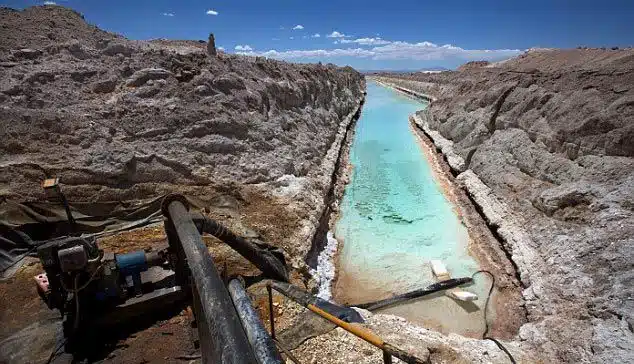Water in Chile is an important topic. Chile has been suffering a severe drought in recent years, with northern region IV experiencing its worst water shortage in 100 years. This year the Ministry of Public works (MOP) declared emergency in several areas where the drought has pushed the country water resources to its breaking point.
Stored water in Chile’s reservoirs is 51% below the historic average and stands at 33% of capacity. According to the environment ministry, 73% of the country’s water goes to agriculture, while industry consumes 12%, mining 9% and residents some 6%.
The mining industry only uses 9% of the countries water but the problem is amplified by the fact that most of the major mining operations are located in the countries driest Northern Region where is it competing with the agriculture industry as well as human consumption.
In response to this, mining companies are already making investments in order to solve their water problems. Some of the biggest mines have switched to using only seawater in their operations. Currently, operations using seawater include Escondida, Michilla, Las Cenizas and Mantos de Luna mines, all in Antofagasta region.
Antofagasta Minerals’ Esperanza copper mine, is a US$2.6bn project that employs four pumping stations, located along the 145km pipeline that stretches from Caleta Michilla on the coast to the company’s deposits located in the community of Sierra Gorda in northern Chile’s Antofagasta region.
Other miners, such as BHP, Anglo and Codelco have chosen to build desalination plants in order to support their future growth plans.
The Chilean mining industry plans to invest US$10bn in desalination plants. According to Cochilco VP, Sergio Hernández, Sixteen treatment facilities could be built by around 2025, with nine earmarked for the country’s arid northern Antofagasta region.
Of that total of 10 projects, three are currently being executed, including for the Sierra Gorda, Antucoya and Escondida mines. Additionally, there are three projects in prefeasibility stage and four in feasibility stage.
Fresh water demand by the copper industry in 2013 was 13m3/s, according to the study by Cochilco. If the projects are not carried out, the Cochilco study says that freshwater use by the copper industry could go as high as 27.7m3/s in 2021. If all the projects are carried out on time, demand for fresh water is expected to increase only 38% to 18m3/s by 2021.
In November, Anglo American opened its US$100mn, 120 l/s desalination plant in northern Chile’s Atacama region. The desalination plant is located 30km south of Chañaral city. It has a 20-year useful life and reportedly uses 30% less energy than plants of a similar size. It will supply 80% of the water needed for Anglo American’s Mantoverde operation.
In addition, Chilean lawmakers are discussing a bill that would force mining companies including giants such as BHP Billiton, Anglo American and Rio Tinto to run all of their copper mines in the country using desalinated water from the Pacific Ocean.
The lower chamber of deputies’ measure, introduced last year, would only be imposed to miners that consume more than 150 liters (40 gallons) of water per second, Noticias de Mineracao reports (in Portuguese).
Australia has considerable experience in water governance, research and water management services and technology and the challenges facing Chile are similar to those Australia faced during the height of the recent drought. The Murray Darling Basin reforms are of great interest to Chilean policy makers, as is Australia’s experience with desalination.
Specific areas identified with strong offerings:
- Water governance consulting
- Specific industry education on water management
- Information gathering and management (telemetry, warning systems, etc.)
- Irrigation systems and technology
- Consulting service on water efficiency including re-usage
- Energy efficient desalination
- Water treatment solutions (utilities, industrial and mining)
- Basin measurement, management and planning
- Identification of water leakage, evaporation and solutions to mitigate water loss
- Aquifer recharge
- Water monitoring and testing.
The Harris Gomez Group has worked with world-class desalination companies helping them enter and operate in the region. We have had the opportunity to work with some of Australia’s greatest companies because we understand how to bridge the gaps that tend to arise when doing business between Australia and Latin America.









